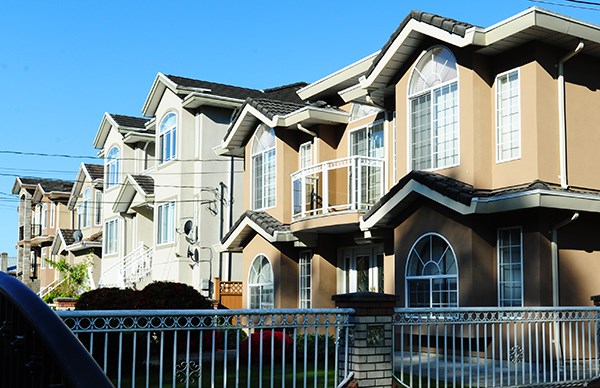If you own a house in Squamish, it’s likely worth substantially more than it was a year ago – or even six months ago.
A single family detached house in Squamish is now worth a benchmark $620,400, or 13.5 per cent more than it was worth a year ago and nine per cent higher than six months ago, according to October figures from the Real Estate Board of Greater Vancouver.
In the past 10 years, the benchmark price has risen 50.3 per cent, according to the board statistics.
Another dramatic change was for apartments in Squamish, where the benchmark price is now $293,000, up 12.6 per cent in the past year. Over the 10-year period, apartment prices have risen 33 per cent.
Townhouses in Squamish are $381,300, up less than the other categories at 5.3 per cent for the year, but still up substantially over 10 years with a 35.6 per cent increase.
The numbers for Metro Vancouver as a whole were even higher, with houses fetching 20.1 per cent more than they did last October at a benchmark cost of $1.2 million – almost double Squamish’s house price.
The sky-high Vancouver prices are part of what’s driving the growth in Squamish but it’s not the whole story, says Councillor Jason Blackman-Wulff, chair of the housing task force.
It’s true that more commuters are using the improved Sea to Sky Highway to work in the city or telecommute or work from home in Squamish, but another factor is the situation in Alberta, he said. “B.C.’s economic growth is going to be leading the country…. Now that there is a downturn in the Alberta economy, we are going to see interprovincial migration into B.C.”
But don’t count on the increases in value to continue at the same pace, Blackman-Wulff warned. He doesn’t expect prices to drop, but he does believe price increases will become less dramatic. “Right now, it’s completely a sellers’ market. The number of listings available versus the demand is significantly off-balance… that should moderate a bit as more developments come through.”
From January to October of 2015, Squamish realtors listed 793 properties including houses, townhouses and apartments – and more than 80 per cent have sold, the real estate board report indicates. Both the number of listings and the sales are up from 2014.
In Squamish, 84 real estate sales in total took place in October, according to the board – that’s almost everything that was on the market. A month earlier, 59 sales took place.
“The fact remains that we are one of the fastest-growing communities in B.C.…. and a province where the economy is good,” said Blackman-Wulff. “Also, with the international attention our community has received with The New York Times…. we have a lot of potential reach of new residents.”
The newspaper ranked Squamish as one of the top 52 places in the world to visit in 2015.
The increasing prices are “a positive indicator of what’s happening in the community,” said Mayor Patricia Heintzman, but it’s a double-edged sword.
Heintzman said she drove around Squamish on the weekend and was surprised by what she saw. “There are literally ‘sold’ signs everywhere. I have never seen it like that in Squamish. In all parts of the market.”
But the bad news is that home ownership in Squamish is becoming increasingly out of reach for average income earners.
“Those numbers have risen so dramatically, and you can understand why people are so concerned about affordability,” the mayor said.
At recent Housing Task Force meetings, members discussed issues including encouraging developers to build more purpose-built rental housing. A development currently being built along the Mamquam Blind Channel is an example, although it is expected to be higher-end rental, Heintzman noted.
Both the mayor and housing task force chair noted the need for other types of housing, including laneway homes above garages, suites and micro-homes, which would necessitate a bylaw change for minimum home sizes in Squamish.
“We have to figure out a way to ensure that everyone who wants to be here can be here,” said Heintzman. “You may not get that single-family home dream, but that’s a 1950s mindset.”
Blackman-Wulff noted that the market is now difficult even for people who usually don’t have a problem finding housing – “people with post-secondary education and fairly good income.”
For others, it’s becoming a dire situation, as rents increase and the vacancy rate is near zero.
“For working families that are below the median income… home ownership is not really feasible,” he added. “We want to make sure there are rentals available for them.”
Heintzman said any large employers coming into town will have to consider building an apartment complex to ensure there is housing for their staff.



